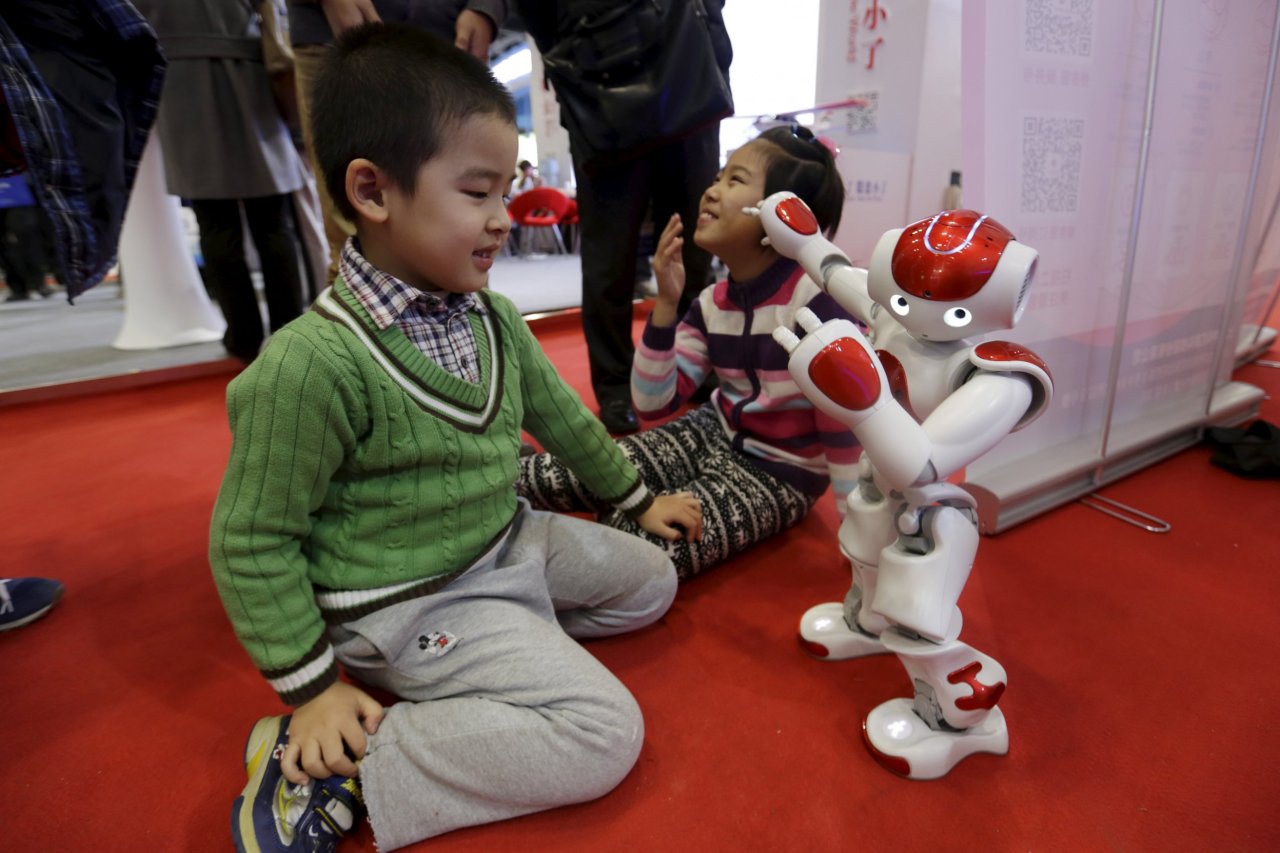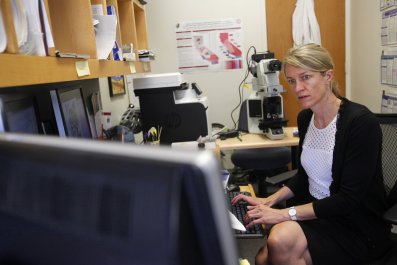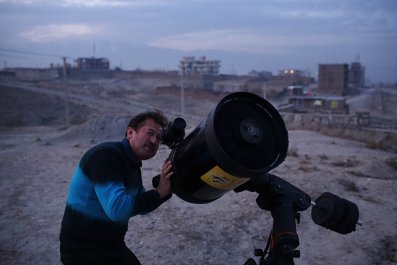In 2015, over a million refugees from war-torn countries like Syria, Afghanistan and Iraq entered Germany, seeking asylum, safety and a better life. Many of them are families with young children. And many will stay: According to German Interior Ministry spokesman Tobias Plate, around half of the new arrivals have already applied for asylum, which means in the coming years German primary schools will see a massive influx of new students. One big problem is that many of these young immigrants don't yet know the language of their adopted country—putting them at risk to quickly fall behind their peers. But German scientists think they've found a solution: robots.
Researchers from the University of Bielefeld in northeast Germany have launched a three-year project to see whether an autonomous, programmable robot can make it easier for 4- and 5-year-old children to gain the language skills they to succeed in the classroom immediately. The French company Aldebaran Robotics developed the 23-inch-tall robot named NAO (pronounced "now") in 2004. Using a tablet, a camera and a microphone, NAO will help newly arrived children learn German by showing them pictures to convey simple words and expressions.
NAO robots are already proving they can help kids learn better. Researchers at the University of Denver say NAO robots are better than people at triggering social responses in autistic children, who are often confused by facial expressions and vocal inflections. Aldebaran says NAO works because it is infinitely patient—and eminently approachable. To make sure kids are comfortable around NAO, the robot is built to resemble a small, cute human, with a torso, a head, two arms and two legs. It can speak, walk—even dance—and has the ability to recognize faces and voices. At Yale University , computer science researchers Aditi Ramachandran and Brian Scassellati are studying how 10-to-11-year-olds interact with robots, with the aim of developing software that enables robots to understand if a student is sad or happy and recognize the progress they make as they learn math.
The Bielefeld team is working to program the NAO robots to recognize and react to the children's language levels as they progress—and improvement, they believe, which will make the robots even more effective teachers. Kirsten Bergmann, one of the researchers on the team, says they hope to have an army of NAO robots (which cost about $7,500 each) in classrooms around Europe within 18 months. This pilot program is part of the bigger L2TOR project, which launched on November 25 and brings together linguists and robotics experts universities across Europe to figure out how to use robots to teach children foreign languages. They'll start with the newly arrived refugees, but, eventually, the robots could help kids all over the world become polyglots.






















